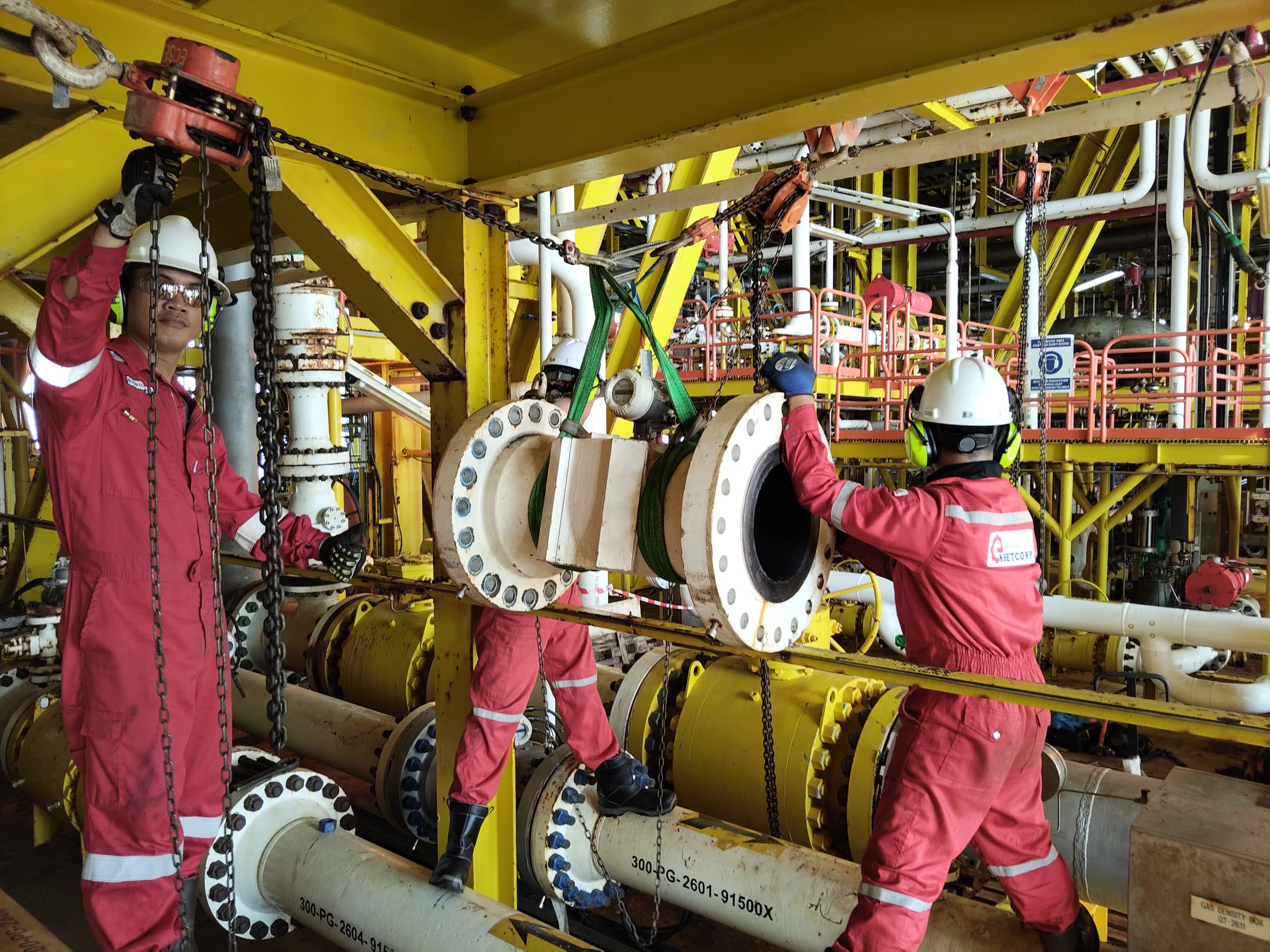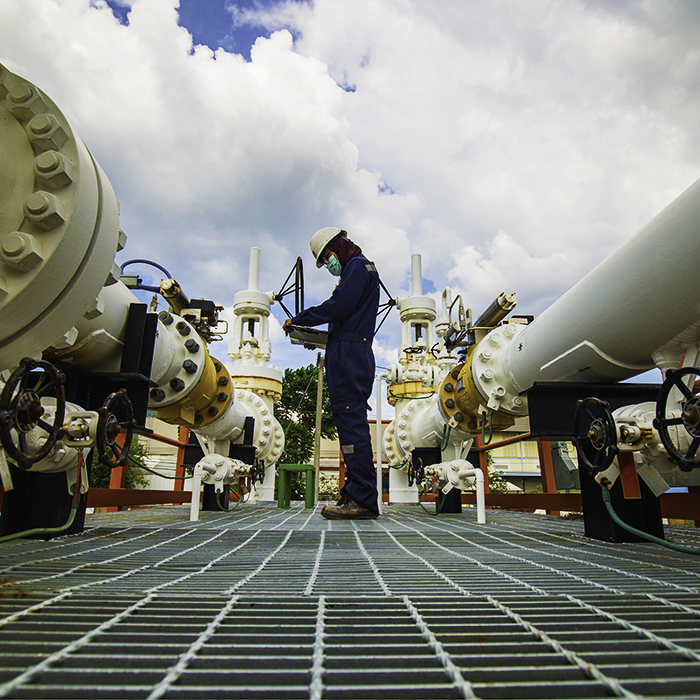The Precision Dance: Orchestrating the Manpower, Schedules, and Logistics of a Critical Meter Change-Out
Posted: July 15, 2025 From our Operations Desk in Labuan
We’ve talked before about why calibrating a large-bore ultrasonic meter (USM) is one of the most critical tasks in fiscal gas measurement. A 20-inch meter is more than a piece of equipment; it’s the cash register for a multi-million Ringgit pipeline.
But knowing why is only half the story. The other half is the how.
Executing a change-out for a meter of this scale is not a routine maintenance task. It is a complex, high-stakes operation that demands a perfect symphony of specialized manpower, military-grade scheduling, and intricate logistics. Pulling back the curtain reveals a precision dance where one misstep can cost millions. Here’s a look at how it’s done.
The Blueprint: Meticulous Scheduling is Everything
The most valuable commodity during a meter change-out is time. Every hour the pipeline is shut down represents significant deferred revenue. Therefore, the entire operation is choreographed against a meticulously planned schedule, often developed months in advance.
T-Minus 3 Months (The Planning Phase): This is where the foundation is laid. It involves intensive coordination between all stakeholders—our project team, the client’s operations personnel, and pipeline control. We secure a slot at a certified calibration facility (which often have long waiting lists), procure all necessary spares like high-pressure gaskets and studs, and begin drafting the detailed execution procedures.
T-Minus 1 Month (The Pre-Mobilization Phase): All resources are marshalled. The project plan is finalized, risk assessments are completed, and comprehensive toolbox talks are held. All equipment—from calibrated bolt torquing machines to specialized rigging and lifting gear—is inspected, certified, and packed. Personnel are briefed, and travel logistics are locked in.
The Shutdown Window (D-Day): This is game time. The schedule shifts from days to hours, sometimes even minutes. Every action, from depressurizing the line and breaking the first flange to torquing the final bolt on the replacement meter, is allocated a specific timeframe. Our on-site lead ensures this schedule is followed to the letter to minimize downtime and bring the pipeline back online safely and swiftly.
The A-Team: Specialized Manpower is Non-Negotiable
This is not a job for a generalist maintenance crew. A successful meter change-out relies on a team of highly skilled specialists, each a master of their domain.
The Lead Instrumentation Engineer: The “conductor” of this orchestra. This individual possesses a deep understanding of AGA 9 standards, ultrasonic measurement principles, and project management. They direct the entire on-site operation, ensuring every technical and safety standard is met.
The Instrumentation & Control Technicians: These are the meter specialists. They are experts in handling the sensitive USM transducers, managing the electronics, performing diagnostic checks, and ensuring the new meter communicates perfectly with the station’s flow computer and control system.
The Mechanical Fitters & Riggers: The masters of heavy metal. They handle the critical tasks of lifting the multi-hundred-kilogram meter, ensuring perfect flange alignment to prevent flow disturbances, and executing precise, multi-stage bolt torquing patterns to guarantee a leak-proof seal under immense pressure.
The Safety Officer: The guardian of the entire operation. This person ensures that every step, from initial energy isolation (Lock-Out Tag-Out) to final gas-up, is performed in absolute compliance with the client’s and our own stringent safety protocols.
The Moving Parts: Mastering Complex Logistics
The logistical chain for a 20-inch meter change-out is as critical as the technical work itself.
Specialized Transport: Moving a high-value, sensitive instrument requires more than a standard truck. We arrange for specialized crating and transport, often with air-ride suspension, to move the meter from the remote pipeline station to the calibration lab—which could be hundreds or even thousands of kilometers away—and back again without risk of damage.
Tooling & Equipment: Success depends on having the right tool at the right time. Our mobilization checklist includes everything from certified lifting slings and flange spreaders to intrinsically safe gas detectors and laser alignment tools. There is no room for improvisation.
The “Golden Spool”: To drastically reduce pipeline downtime, the operation often involves a “three-way dance” with a pre-calibrated spare meter, or “golden spool.” The logistics now include managing the removal of Meter A, the installation of Spare Meter B to keep the gas flowing, and the eventual re-installation of the newly calibrated Meter A, all while keeping track of multiple high-value assets.
Conclusion: Excellence in Execution
When a single meter measures a significant portion of a nation’s energy supply, excellence is the only acceptable standard. A successful change-out is a quiet victory—one marked by a safe execution, minimal downtime, and the reassuring hum of a newly calibrated meter measuring with renewed accuracy.
It’s a precision dance of planning, people, and logistics. When millions are on the line, you need a partner who has mastered every step.
Does your facility require a critical asset upgrade or calibration? Contact us to learn how our expert teams can manage the entire process, safeguarding your revenue and ensuring operational peace of mind.





0 Comments